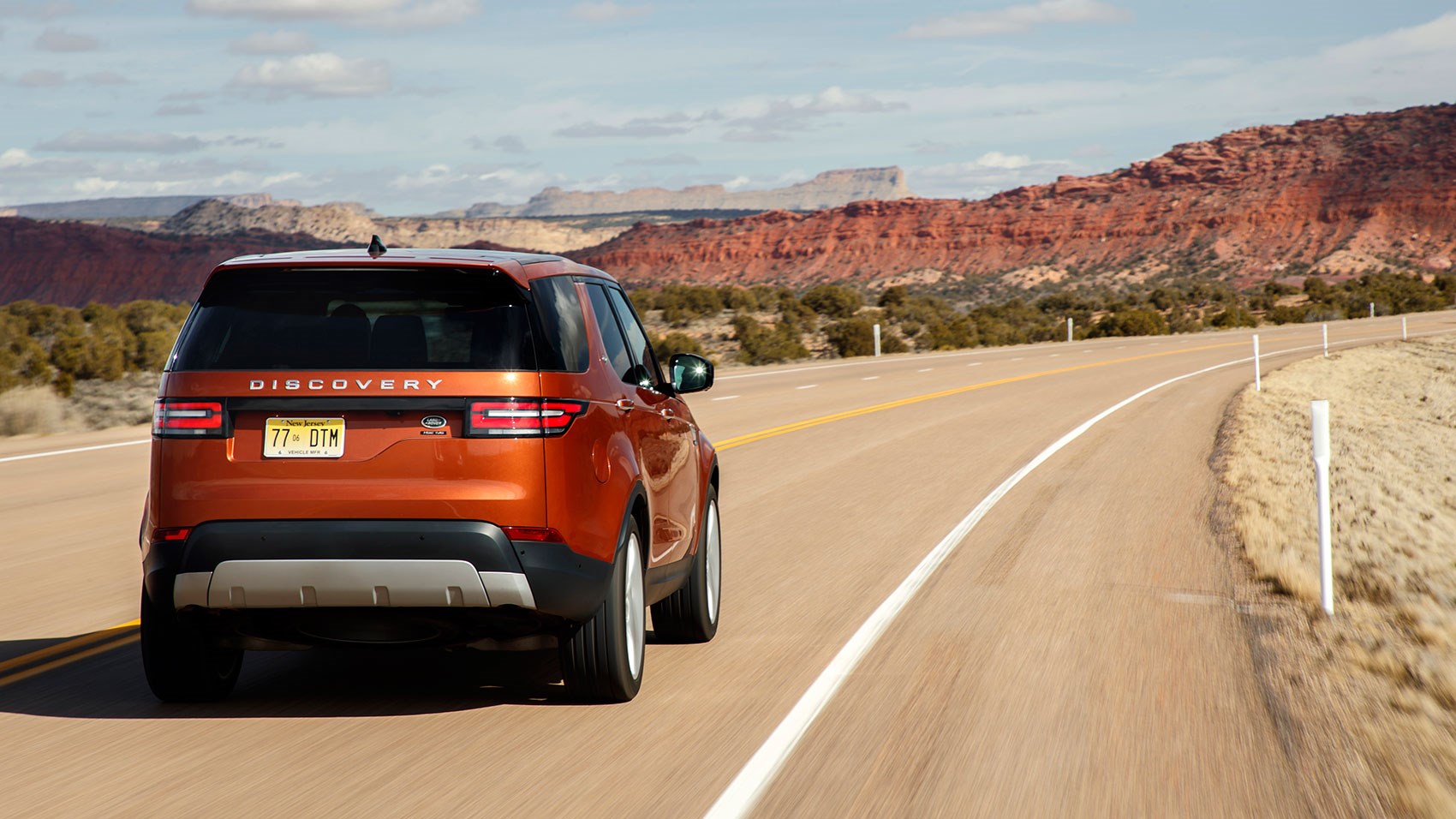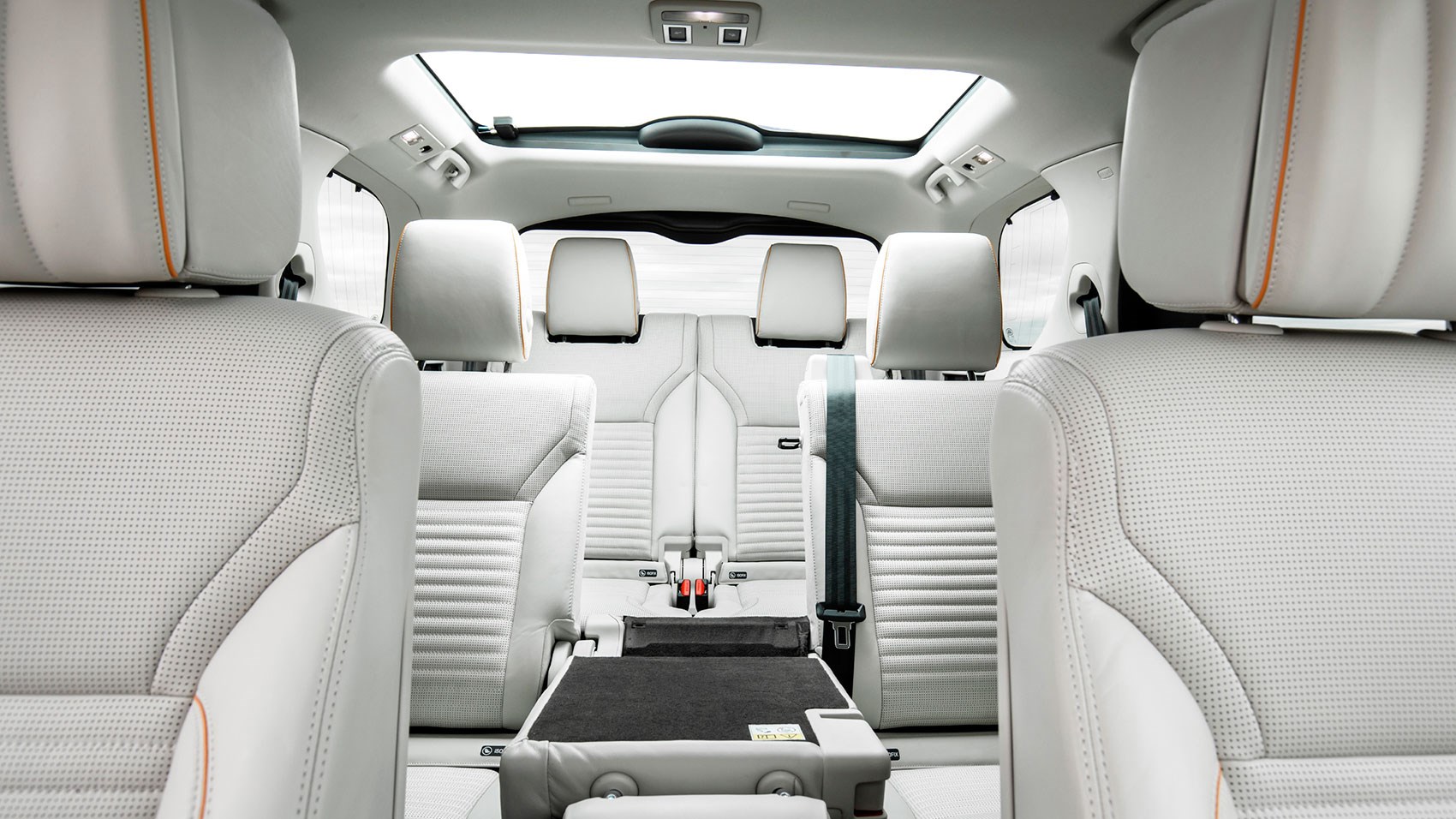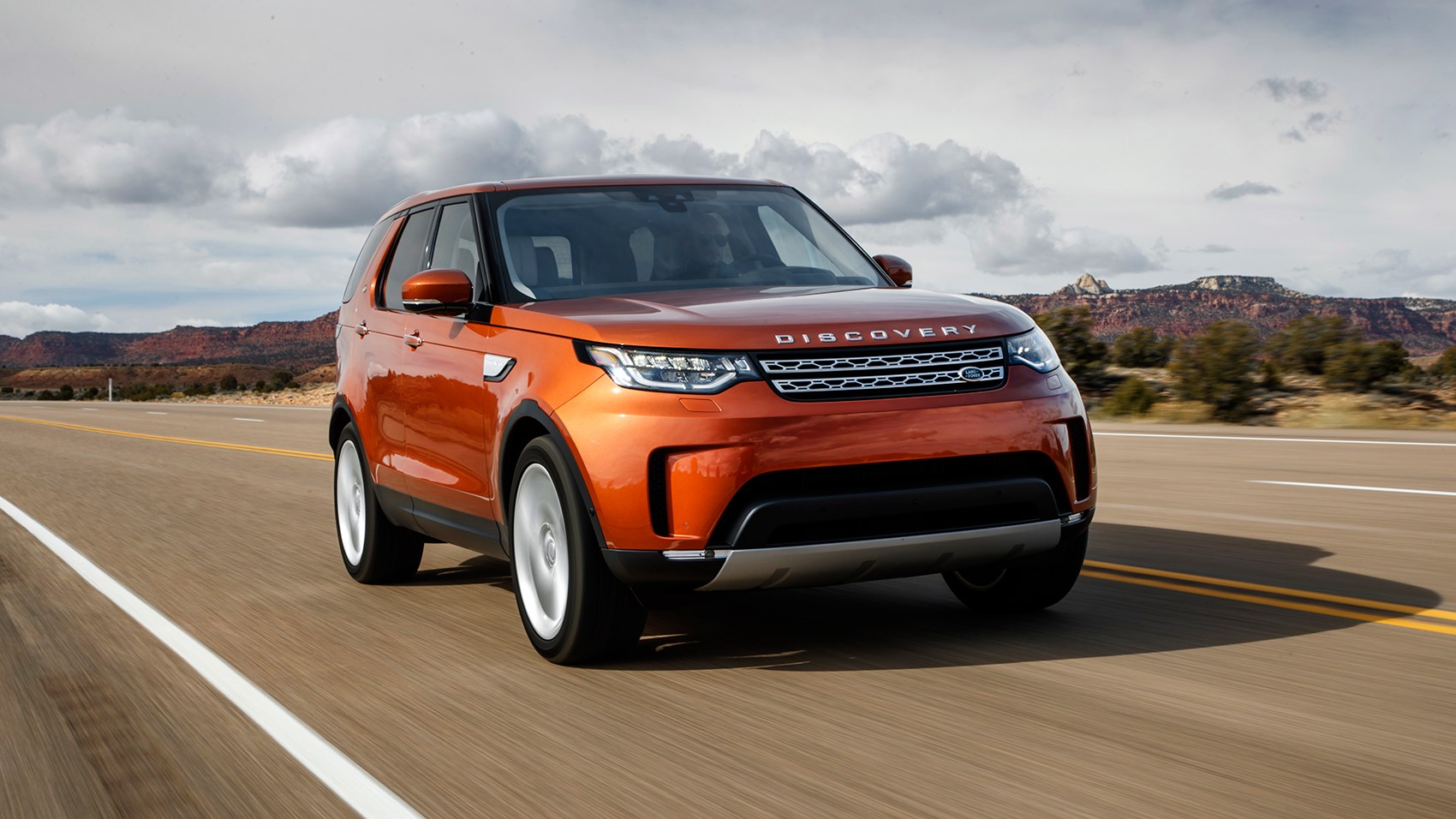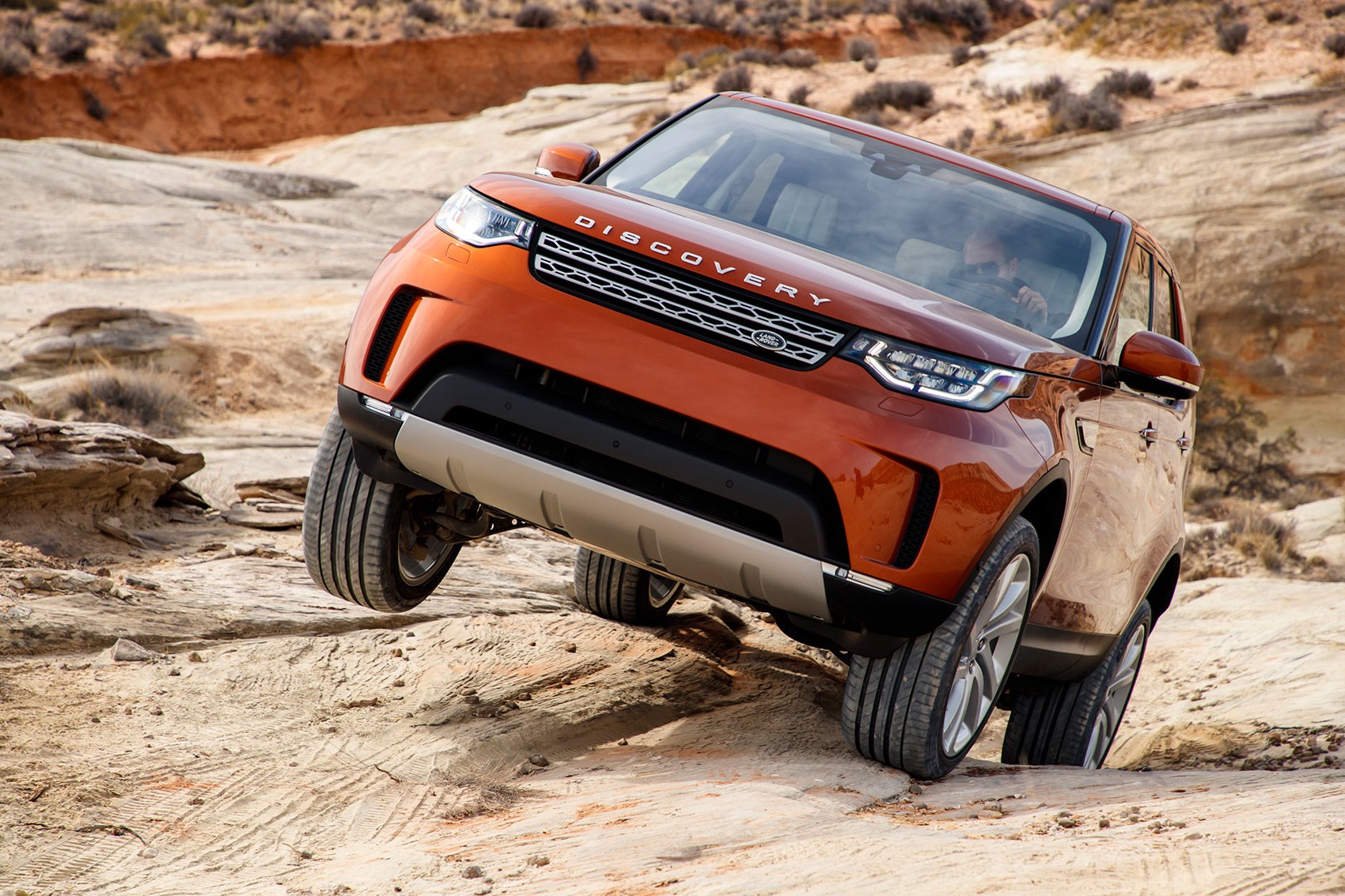► Fifth-generation Land Rover Discovery review
► Bigger, lighter and more economical
► Priced from £43,495; we test £64k TDV6
It seems like an awfully long time since the new Land Rover Discovery was revealed back in September 2016, but we’re among the first in the world to get our hands on the final production version and test it on the open – as well as closed – road.
Read on for our full expert review of the new 2017 Discovery SUV.
Click here to read CAR’s earlier off-road first drive in the pre-production Discovery 5
How new is new?
Very. Like its recently reborn Range Rover siblings, the Discovery switches to aluminium construction – 85% of the body-in-white is made of the stuff – which means big weight savings; the lightest Disco 5 is 480kg lighter than the lightest 4 and stiffer too, although it still pushes the scales to 2.1 tonnes. It’s no flyweight…
There’s magnesium in the nose, higher-strength aluminium in key safety zones and steel subframes; Land Rover says the latter mean more load space and a better centre of gravity.
Even the tailgate is a one-piece composite, although die-hard Disco lovers will be aghast at the ditching of the two-piece bootlid, perfect for picnics.
And what about the Land Rover’s engine room?
There’s a four-cylinder diesel in the Discovery for the first time, a new twin-turbo 237bhp version of the Ingenium unit seen elsewhere in the JLR range, but for UK customers at least, the lower 178bhp version is off the menu. You can still have the V6 diesel, and for maximum swank the V6 petrol is just the ticket.

Paired with the standard eight-speed ZF automatic gearbox the V6 diesel is capable and low effort. Refinement is good, if not exceptional at speed, and there’s enough hurry-up available if circumstances require it.
Can I get inside now?
It’s still under five metres in length but the new Land Rover Discovery’s wheelbase is longer by 38mm to give 2923mm in total, and there’s a claimed 960mm of legroom in row two. Aero efficiency is significantly improved, not only helping reduce emissions but cabin comfort also; by Land Rover’s own measure it’s as quiet in here as it is in a Range Rover.
To our ears there’s a little more going on in the background, with a faint underlying hum from the V6 diesel at cruising speeds and moderate wind noise, but this is nit-picking.
The Discovery is a full seven-seater, even more so than the Discovery Sport, and the Intelligent Seat Fold system lets you raise or lower the system in any combination from the touchscreen, buttons in the boot or, if you feel like showboating, from your smartphone. You can flatten all five rear seats in 14 seconds flat (sorry), leaving you with two metres of load length and 2500 litres of space.

In the cabin there are 45 litres of stowage space dotted around too. Expect to lose the kids’ books, sweets and iPods in quick order.
In practice this all adds up to a very high level of practicality. The front row is as close as you’ll get to a Range Rover without stumping up for the extra, and with so many cubbies the biggest problem is likely to be remembering where you put everything.
How roomy is the new Land Rover Discovery 5 in the rear seats?
In the second row it’s perfectly possible to seat three adults across and the third row is genuinely suitable for grown-ups too; if you’re under six foot you have sufficient-plus head and legroom, taller folk will fit but probably best on the way back from the pub rather than on the way there.
The seat folding circus trick is fine when you hit the right button at the right time, but from the front seats that can mean several taps on the screen to make it happen. Using your phone might be the best option on that front.
The cabin itself is just about on a par for your £60k too. There’s plenty of leather and the lower order materials feel decent, and although an Audi Q7 feels more tightly built with fractionally better plastics, the Discovery’s layout is easier on the eye. Sensibly the plusher stuff is kept higher up the doors so the lower half is less bothered by muddy boots.
So it’s big and luxurious, but how does the new Land Rover Discovery drive?
Discovery Five sits on front double wishbone and rear multi-link suspension derived from the Range Rover, so there’s a clear bias towards off-road ability and comfort to give distance between it and the Sport models. However it does pinch the steering rack from the Range Rover Sport to give lock-to-lock in 2.7 turns.

On air suspension (standard on all cars in the UK) and with the V6 up front, the Discovery steers with an assured sharpness although you’re aware of all the mass that the suspension is having to deal with. The comfort bias is entirely appropriate for a car that is likely to be to be used for hauling stuff rather than hauling ass; if you should try and hurry it along it will do so, but a little reluctantly.
It seems obvious to say it, but Discovery is less engaging and capable than the Range Sport, but less yacht-like than the Range Rover. Pay your money and take your choice…
Will it go off-road?
The off-road stats stack up too, with maximum ground clearance of 283mm, 500mm of wheel articulation and 900mm wading depth. Land Rover says it is the most capable car off-road they’ve ever made – including the Defender – which seemed like an entirely scoff-worthy statement at the time.

And pre-planned test route off-road excursions are, of course, designed to be within the capabilities of the vehicle being launched, but our Discovery test finished with a rock crawl that felt vertical from the driver’s seat, was a challenge on foot and required a pair of spotters helping out to avoid it tumbling off into the boondocks. It took a few minutes, but even on regular tyres it made it. Be assured, the Discovery is more talented off-road than you are.
Verdict
Should you buy a new 2017 Land Rover Discovery? You might have already. The very first cars only arrived in dealers on Valentine’s Day yet more than 20,000 people had already put their names down for one. Land Rover’s product range is evolving rapidly and seemingly covering all the right ground. People wanted the practicality of the old Discovery but were keen for it to be pushed upmarket, and that’s exactly what it’s done.
Rear end aside, arguably, it looks good on the road, the interior is comfortable and smart as well as life-swallowingly practical and the driving experience is fit to deal with almost anything you can throw at it. It’s far from being a cheap car, but it’s also ready to be your only car.
Read more Land Rover reviews by CAR magazine